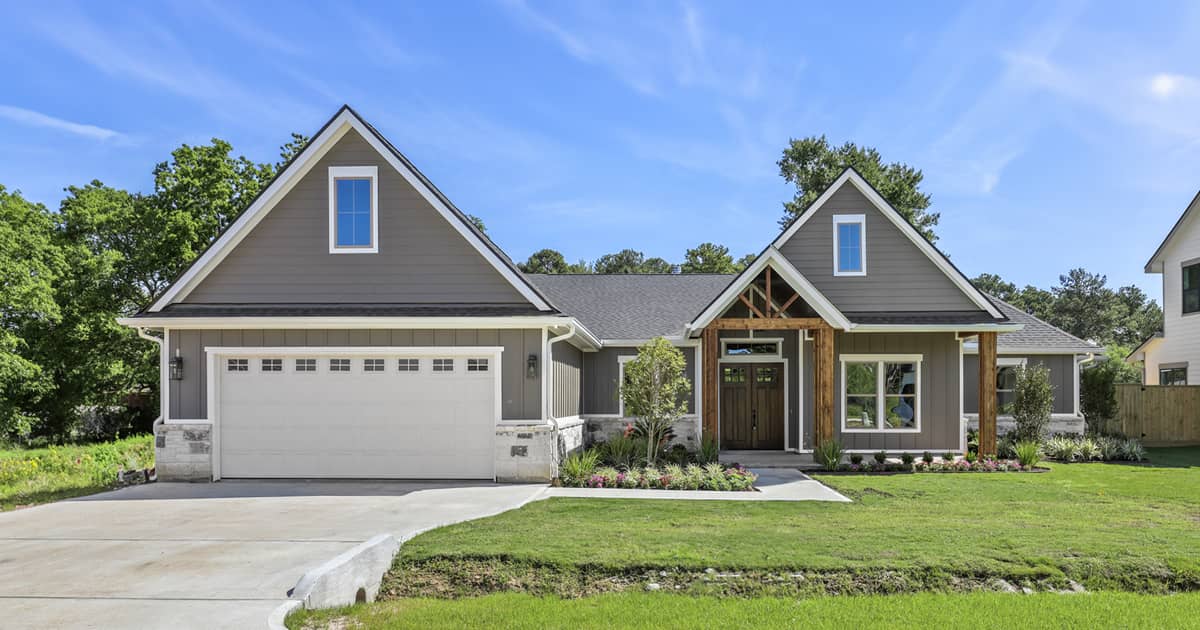The Best Time of Year to Paint Your House

When planning an exterior paint job, color isn’t the only big decision. Timing plays a huge role in how long your paint will last and how smooth the project runs. Weather, humidity, and temperature all affect how paint adheres and cures — and ultimately, how durable the finish will be.
Choosing the best season to paint exterior of house is about more than convenience. Get the timing right, and your home’s exterior will stay protected and beautiful for years. Get it wrong, and you may face premature fading, peeling, or the need for touch-ups much sooner than expected.
This guide breaks down how each season impacts exterior painting so you can plan your project with confidence and get results that truly last.
How Weather Conditions Impact Exterior Paint
Before choosing the best season to paint exterior of house, it helps to understand how weather directly affects the outcome. Paint doesn’t just sit on the surface — it bonds and cures, creating a protective layer. For that process to work, conditions have to be right.
- Temperature: Most exterior paints perform best in moderate temperatures, usually between 50°F and 85°F. Extreme heat can cause paint to dry too quickly, leading to cracking or uneven texture. Cold weather can slow curing, making the finish more vulnerable to damage.
- Humidity: High humidity prevents paint from drying properly, increasing the risk of streaking, bubbling, or poor adhesion. Ideal painting conditions typically require dry air with low to moderate humidity levels.
- Rain and Moisture: Moisture is one of paint’s biggest enemies. If it rains too soon after painting — or if surfaces aren’t fully dry beforehand — the paint can blister or peel prematurely.
- Direct Sunlight: Painting in harsh sun can cause paint to dry on the surface before it adheres underneath, leading to a weaker finish. Professionals often work in shaded areas or time their work for cooler parts of the day to avoid this.
By considering these weather factors, homeowners can see why timing matters so much. The right season provides a balance of conditions that allow paint to cure properly and last longer.
Spring: A Popular Start for Fresh Projects
Spring is one of the busiest times of year for exterior painting — and for good reason. After the harsh conditions of winter, many homeowners are eager to refresh their home’s curb appeal. The mild temperatures of spring are usually within the ideal range for exterior paint to cure properly, making it a convenient time to schedule projects.
There are clear benefits to spring painting:
- Comfortable temperatures: The moderate weather provides stable conditions that allow paint to adhere and dry evenly.
- Boosting curb appeal early: A spring project ensures your home looks fresh for the summer months, when outdoor spaces get the most use.
- Seasonal maintenance timing: Spring is often when homeowners inspect their property for winter damage, so it’s the perfect time to address painting needs.
However, spring also comes with challenges. Rain showers and unpredictable weather patterns can delay projects or interrupt the curing process. That’s why working with professional painters is so important — they know how to plan around changing conditions and ensure paint is applied at the right time of day for best results.
Summer: Longer Days, Faster Results (with Caution)
Summer often seems like the perfect season to schedule exterior painting. Longer days mean more daylight hours for painters to work, and the generally consistent weather patterns can allow projects to move along quickly. Many homeowners also plan home improvement projects during this time, making summer one of the most popular choices.
There are definite advantages:
- Extended workdays: More daylight hours allow painters to finish projects more efficiently.
- Predictable weather: In many regions, summer offers fewer rain delays compared to spring.
- Quick results: Faster turnaround means you can enjoy your home’s refreshed look throughout the summer season.
Still, summer has its challenges. Excessive heat or humidity can interfere with paint application. When temperatures rise too high, paint may dry too quickly on the surface before properly bonding underneath, which can shorten its lifespan. Humid conditions can also lead to streaking or poor adhesion.
Professional painters understand how to adapt during hot weather — often scheduling work for early mornings or evenings when temperatures are cooler, and adjusting products to ensure durability. This expert planning ensures your exterior paint job stands up to the summer sun instead of suffering because of it.
Fall: The “Sweet Spot” for Exterior Painting
If you ask professionals about the best season to paint exterior of house, most will point to fall. With its moderate temperatures and lower humidity levels, fall often provides the most stable painting conditions of the year. Unlike spring, there’s less chance of rainstorms disrupting the schedule, and unlike summer, there’s little risk of paint drying too quickly.
Here’s why fall is often considered the ideal time:
- Consistent mild weather: Paint cures best when temperatures are steady — not swinging drastically between hot days and cool nights.
- Lower humidity: With drier air, paint adheres more evenly and is less likely to bubble or blister.
- Durability before winter: A fresh coat in fall means your home enters the cold months with a strong protective barrier against moisture and temperature extremes.
Another advantage is that fall painting schedules can be more predictable. With fewer weather delays, projects stay on track, and homeowners enjoy peace of mind knowing the work was completed under near-perfect conditions.
Winter: Rarely Ideal, But Sometimes Possible
When it comes to choosing the best season to paint exterior of house, winter is usually at the bottom of the list. Cold temperatures, moisture, and unpredictable conditions make it difficult for paint to cure properly. Traditional paints are formulated to perform best in moderate weather, and when it’s too cold, they can thicken, apply unevenly, or fail to bond securely.
That said, winter painting isn’t entirely off the table in every situation. In regions with mild or warm winters, projects can still be successful when conditions are right. Additionally, many manufacturers now produce specialized paints designed to cure at lower temperatures, which skilled painters can use effectively.
Here’s what makes winter a challenge — and when it may work:
- Temperature limits: Freezing or near-freezing weather prevents paint from curing, making most winter days unsuitable.
- Moisture concerns: Rain, snow, and ice introduce too much moisture, which interferes with adhesion and durability.
- Limited windows of opportunity: In warmer climates, daytime highs may occasionally create short windows where exterior painting is feasible.
For most homeowners, winter isn’t the ideal season to schedule exterior work. But in select cases, with the right materials and a professional’s expertise, it can still be done successfully.
Plan Ahead for the Best Results
Timing can make or break an exterior painting project. While every season has its advantages, professionals generally agree that fall provides the most consistent conditions, making it the best season to paint exterior of house for long-lasting results. Spring offers a fresh start but brings unpredictable rain. Summer delivers long workdays but can be too hot or humid, and winter is rarely ideal unless you live in a mild climate.
The takeaway is simple: the right season isn’t just about convenience — it’s about ensuring your paint bonds properly, cures evenly, and stands up to years of weather. By planning ahead and working with experienced painters who know how to navigate your local climate, you can maximize the durability and beauty of your exterior finish.If you’ve been considering repainting, think about the conditions your home faces throughout the year. The right timing, paired with professional expertise, can transform your home’s curb appeal and protect it for years to come.

